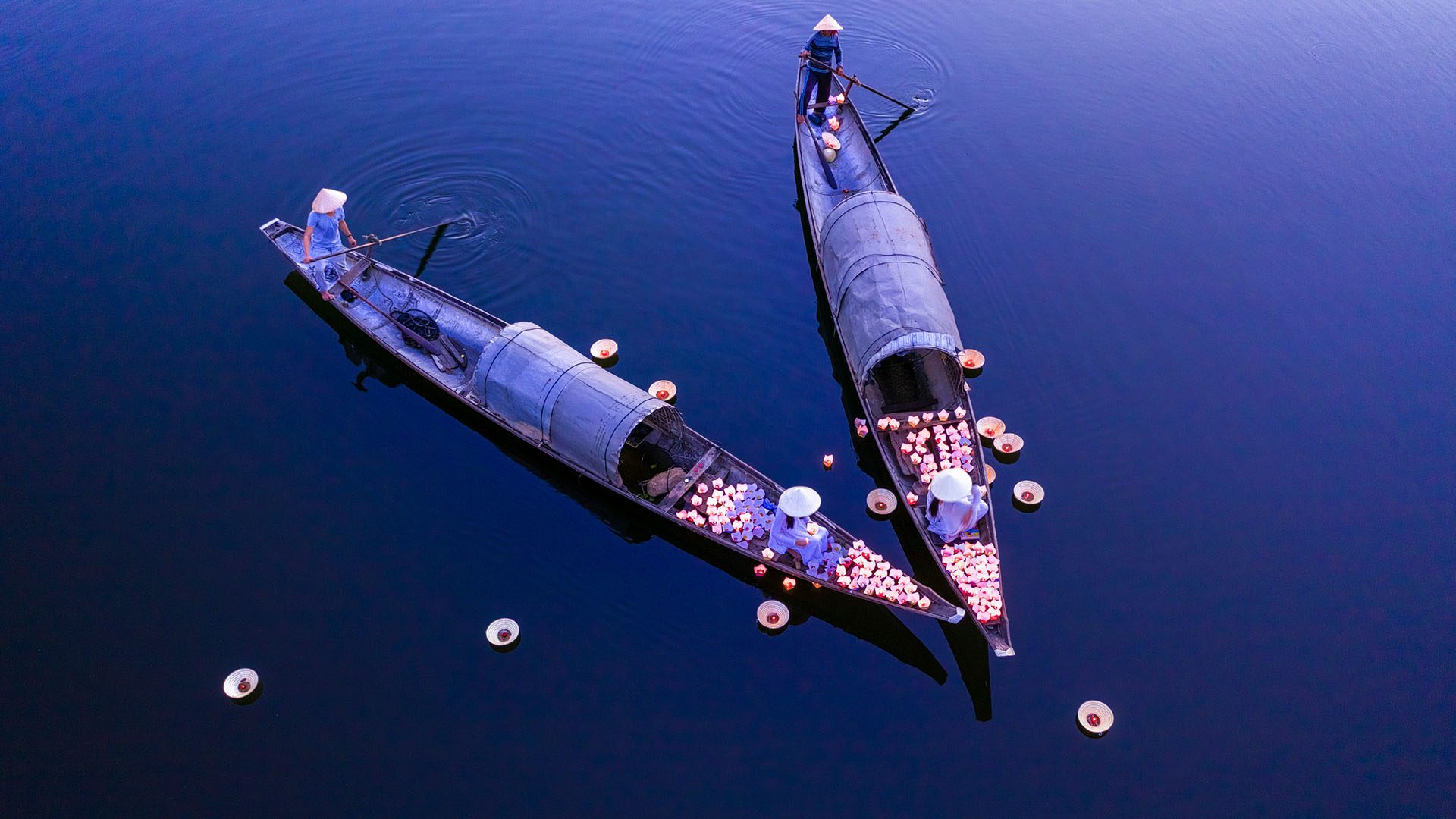|
Listen To Article
|
Luxury Vietnam Without the Crowds: 8 Curated Ways to Go Deep. Vietnam has been whispering to me all year—the kind of call that doesn’t shout “beach” or “bucket list,” but promises something rarer: quiet luxury threaded through culture, craft, and astonishing landscapes. If you’ve been craving an indulgent reset that still feels meaningful, this is where I’d send you now.
Think community-led treks in misty highlands that end in glamping comfort, seaplane picnics over limestone karsts, private dragon boats gliding past imperial pavilions, rooftop dining above Saigon’s neon, and riverside retreats where centuries-old healing rituals are practiced with modern grace.
Vietnam’s luxury scene has evolved fast—experience-driven, design-forward, and deeply local—making it effortless to pair five-star polish with spiritual depth. Plan this as a standalone escape or stitch it into a north-to-south odyssey: Sapa to Halong, Hue to Hoi An, the Mekong to Phu Quoc. Here, World Travel Magazine curates eight truly singular experiences—transformative, discreet, and unforgettable—because a great getaway should change your pulse, not just your location.
The Art of Slow Travel: Sapa’s Ethical Trek & Glamping Retreat
There are journeys that tone the body, and journeys that soften the heart. Sapa does both. I followed Hmong and Dao guides along quiet forest paths where bamboo sighed in the wind, terraced rice fields curved like amphitheatres, and hillside hamlets sent woodsmoke into a silver sky. This isn’t a “tick-the-view” hike; it’s an ethical, community-led immersion where the cadence is human—unhurried, attentive, generous.
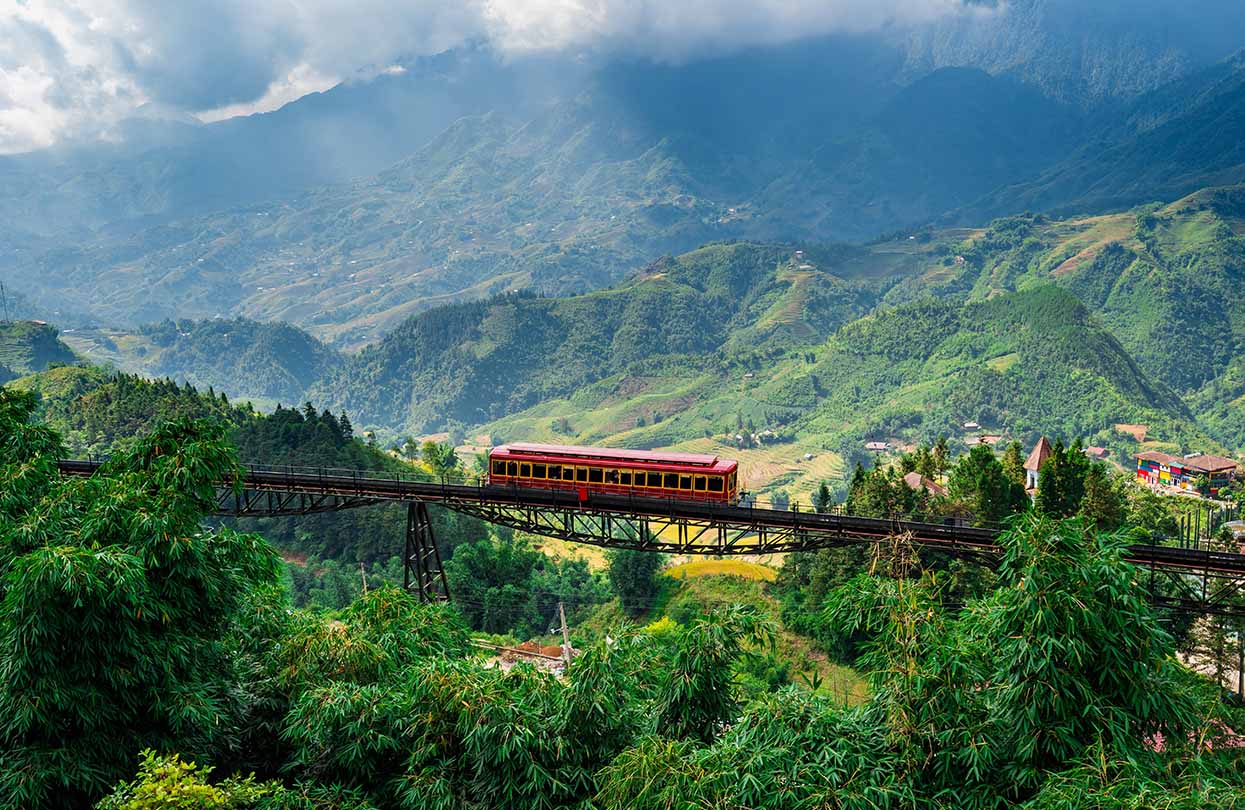
Fansipan mountain in Sapa city, Image by kitzcorner, Shutterstock
Mornings begin with hot ginger tea and a trail brief that feels like a story: which clan tends which slope, which dye plants turn indigo deepest, which lullabies are sung at harvest. We walk at a conversational pace—half-day if your calendar is tight, multi-day if you’ll allow the mountains to recalibrate you—stopping for sticky rice, forest greens, and the kind of laughter that needs no translation.
In the late light, camp settles into a pocket of terraces and we circle a small fire; elders share textile patterns like family trees. Then comes the indulgence: glamping tents warmed by soft bedding, hot showers, and gourmet suppers that marry highland produce with chef intuition. Luxury here is quiet, precise, and never performative.
Read More: Uncovering Hon Kho Island: Vietnam’s Marine Masterpiece
If you prefer, spend a night in a traditional Hmong or Dao home—a private room prepared with care, baskets of herbs to steam away the chill, children curious but shy at the doorway. It’s a privilege to be welcomed; your presence sustains the very culture you came to admire.
For travellers who crave meaning with their comfort, this is the north at its most restorative: slow movements through living culture, real hospitality, and landscapes that stay in the body long after the flight home.
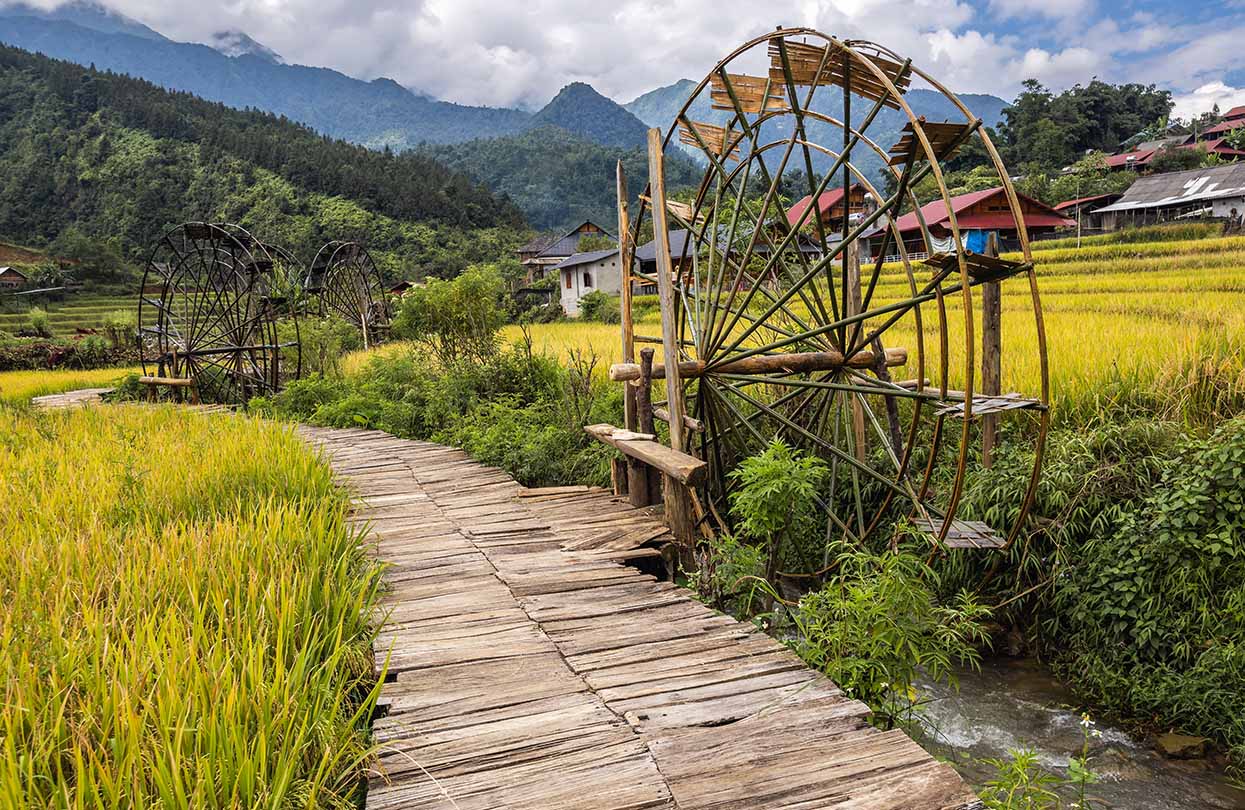
Cat Cat village rice fields stretching across mountain sides in Vietnam, Image by RuslanKphoto, Shutterstock
Elegance by Invitation: Artisans, Ancestry & After-Hours Access
There are cities that you pass through, and there are cities that pass through you. In Vietnam, the latter happens when access meets care — when doors open quietly, a chair is pulled out in a private courtyard, and a master artisan places a centuries-old tool in your hand as if entrusting you with a story.
For travellers who want a luxurious escape that is also deeply felt, Vietnam’s cultural heartlands offer something rare: intimacy without spectacle. I planned my days as a string of small, precise moments — each one tuned to craft, sound, and the people who keep both alive.
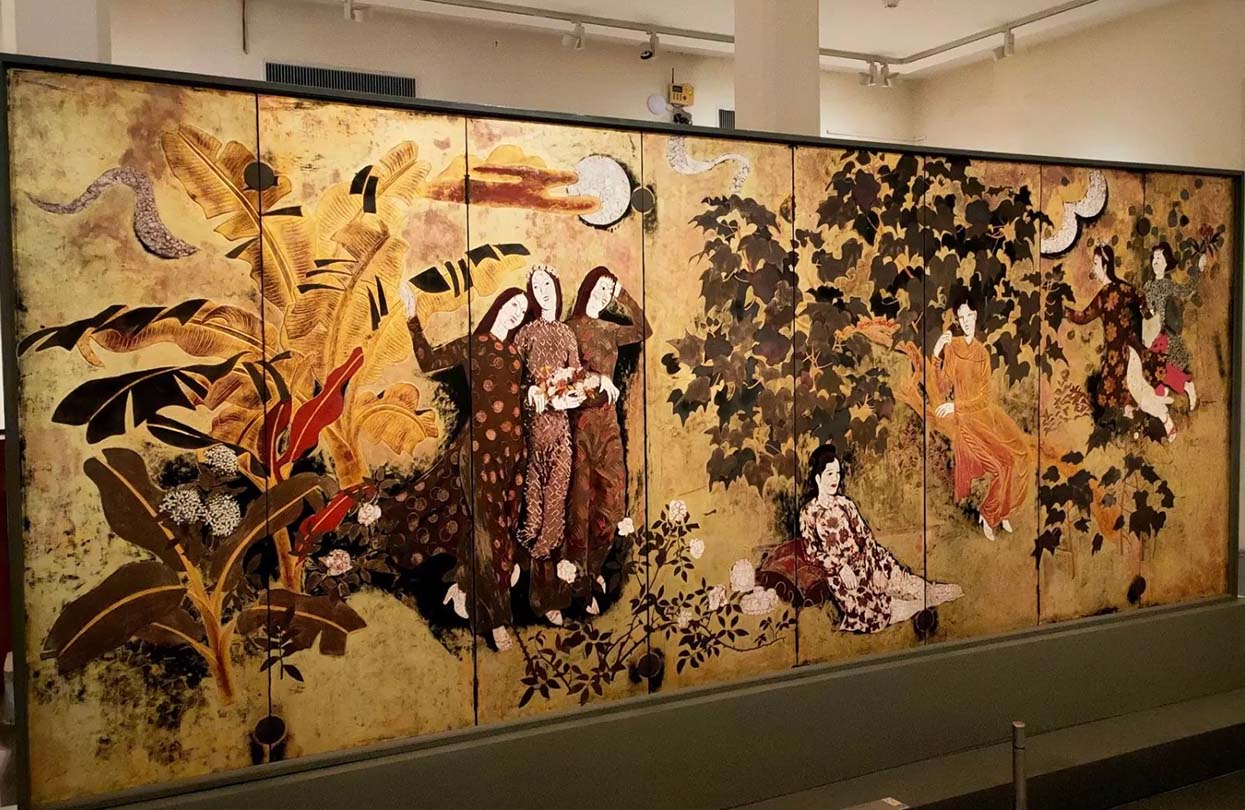
Fine Laque painting in Vietnam
In Hanoi’s Old Quarter, my guide walked me past the racket of scooters into rooms that never appear on public itineraries. The first door led to a lacquer workshop that smelled faintly of pine smoke and resin. A master — the third generation in his family — laid out thin layers of sap, egg shell, and gold leaf on a cool stone tablet, then placed the brush in my palm.
There was nothing touristy about the hour; we worked in companionable silence, learning how patience creates depth, how tiny mistakes can be burnished into beauty. When we finally stepped back, my small piece glowed — imperfect, yes, but warm with effort. It felt like proof that time can be textured.
Nearby, I was ushered into a preserved tube house — narrow, elongated, with a green lung of sky in the middle. The resident host showed me the altar, the ancestral portraits, a brick worn smooth by a century of feet. Lunch unfolded in the inner courtyard: crab noodle soup bright with lime, young banana flower salad, and grilled pork wrapped in herbs I could not name but will never forget.
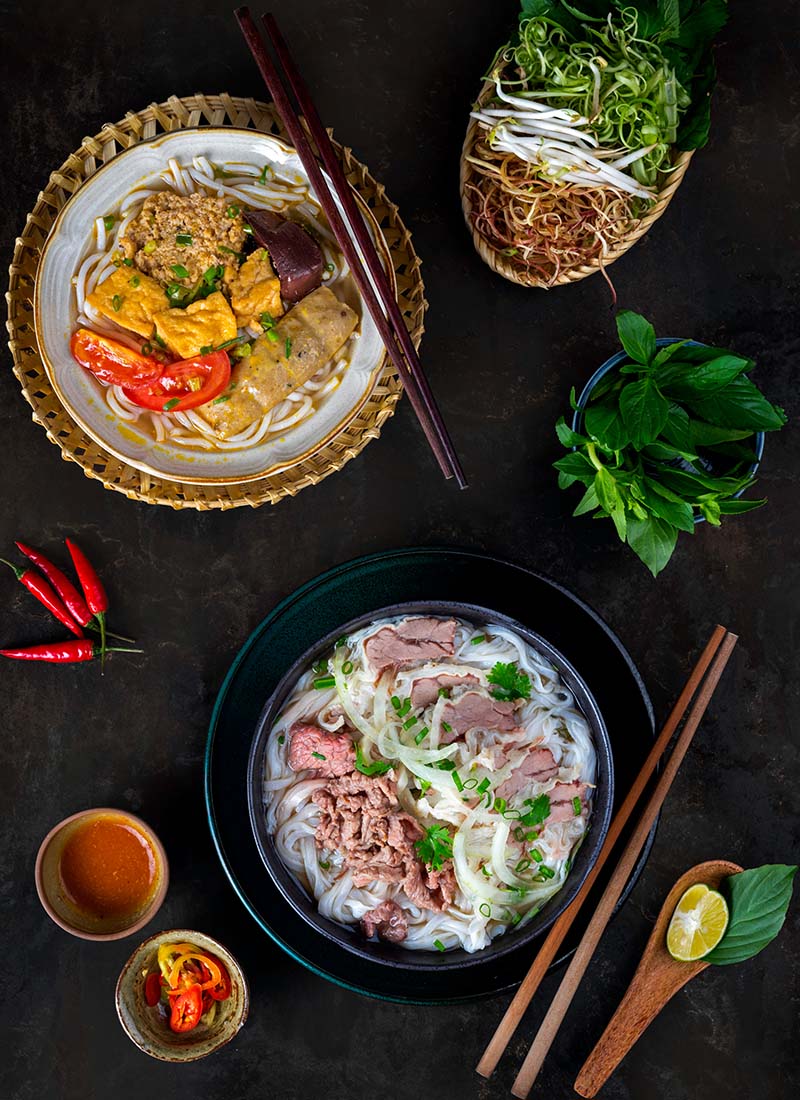
Crab soup and beef noodle (Bun rieu, Pho bo) serving with chili sauce, Image by ngoc tran, Shutterstock
Privacy changed everything; each dish arrived with an anecdote, each taste mapped to a family recipe. Later, in a tiny theatre, a private water-puppet performance began — the musicians so close I could see their fingers on the dan bau’s single string. In the intimacy of that room, the lake myths felt newly minted.
Hoi An asked me to slow further. I arrived at dusk, when the river held a thousand small lights and the streets smelled of star anise and rain. The luxury here was measured in permissions, not price tags. A guide arranged a visit to a merchant house kept quietly by a descendant. There were no ropes to keep me back; instead, I was invited to sit, to touch the grain of jackfruit wood, to look closely at mother-of-pearl inlay that once telegraphed status across oceans.
Read More: Luxurious Train Journey In Vietnam With Vietage
In a lantern workshop, a master artisan set out silk dyed in colors that looked almost edible — persimmon, lotus, green tea — and taught me how bamboo ribs find their geometry. My lantern left with a slight lean and my initials stitched into the hem. We took a private boat along the Thu Bon River afterward, a wooden craft moored away from the flotilla. A trio of musicians tuned up — monochord, moon lute, soft hand drum — and for half an hour Hoi An’s old songs rose and fell with the current. The boatman cut the engine; the city drifted by as a sequence of vignettes: a woman folding rice paper by a charcoal brazier, two boys rehearsing lion-dance steps, someone laughing in a courtyard lit like honey.
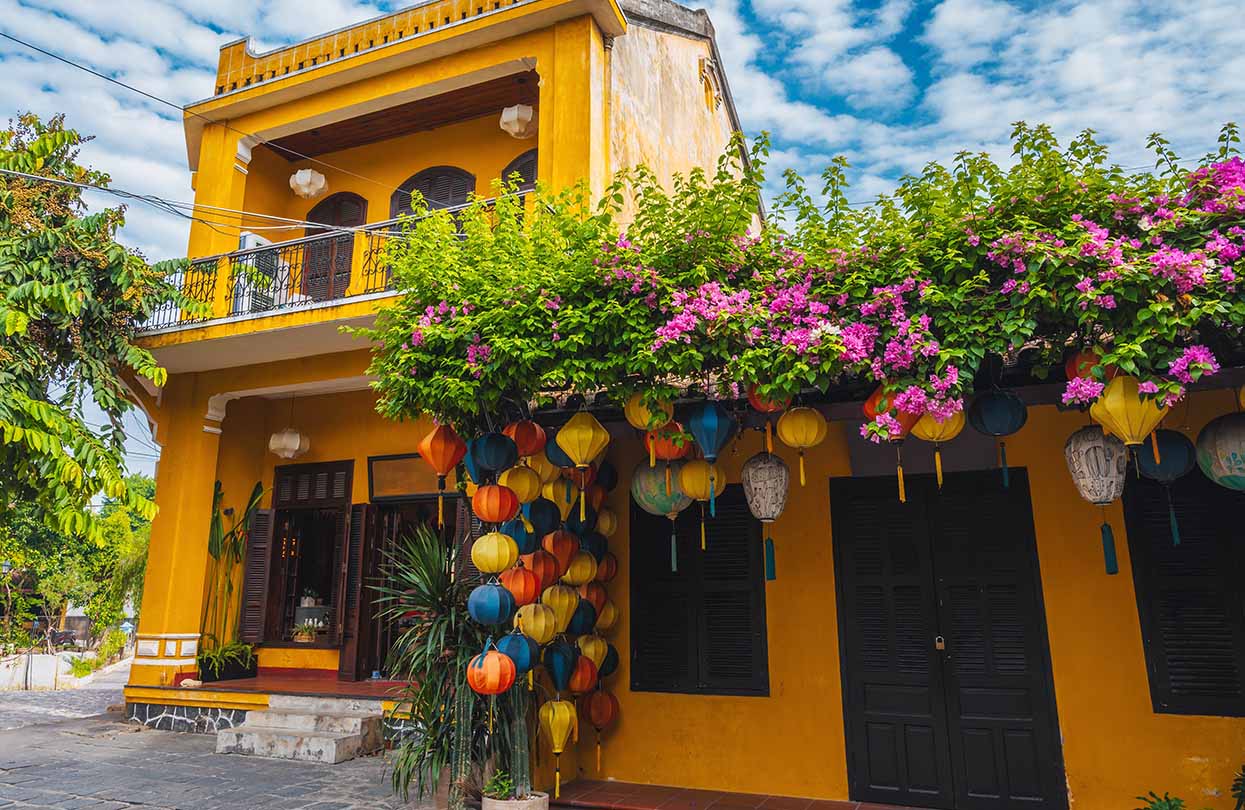
Lanterns in the old town in Hoi An, Image by alexkoral, Shutterstock
Huế, by contrast, carries quiet like an inheritance. It is the city I recommend most to travellers who want their luxury delivered as contemplation. With a historian beside me, I visited the mausoleum of Emperor Gia Long, a site that rarely features on standard loops. We had the grounds to ourselves. The historian spoke softly about the first Nguyễn emperor, about geomancy and river bends, about the way Huế aligns power with landscape. The tomb is spare, its beauty cumulative rather than immediate; the absence of crowds let its lines breathe.
Later, within the Imperial City, a short private concert of Nhã nhạc — the royal court music — unfolded in a quiet pavilion. Lanterns flickered on carved beams; silk sleeves moved like water. After the final note, the musicians spoke about their instruments: the hue of the wood, the reason a melody bends here and not there, the echo a particular room encourages. It was the opposite of performance; it felt like being invited into the workshop of sound itself.
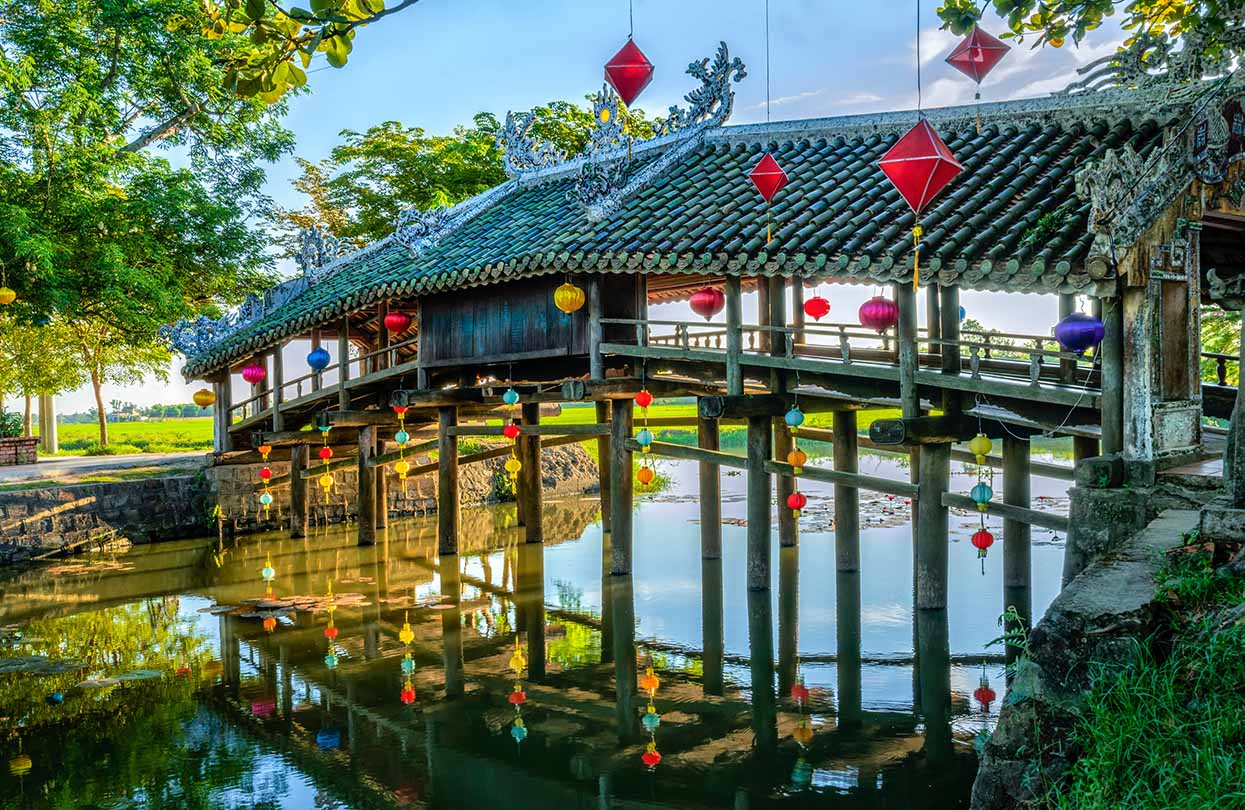
Thanh Toan tile bridge near Imperial City, Image by Nguyen Quang Ngoc Tonkin, Shutterstock
Everywhere I went, art provided a parallel itinerary — another way to understand place. In Ho Chi Minh City, I slipped into Green Palm Gallery, where contemporary canvases and lacquerware gave the city’s pace a visual grammar. Down the road, B/S Art Studio folded tradition into experiment; I left with a small piece of gilded paper that looked like sunlight caught in resin. In Hanoi, 54 Traditions Gallery displayed textiles and ritual objects from Vietnam’s many ethnic communities — not as curios, but as living practice.
It grounded everything I’d seen in Sapa: motifs, tools, a logic of color. In Hoi An, Réhahn’s Precious Heritage Art Gallery Museum lined a long room with portraits of Vietnam’s 54 groups; faces at once proud and unguarded, garments that read like archives. And in Huế, Lebadang Memory Space devoted itself to a single master, Lê Bá Đảng, whose work braids Vietnamese themes with Western form. A smaller Gakka Art Gallery, family-run, offered oils and lacquer pieces that felt made for homes rather than museums; buying directly from the maker made the transaction feel like a conversation.
If you are wondering where the “luxury” sits in all this — it’s here: in curation, in access, in the way time is handled. My days were edited so that I never queued, never rushed, never felt herded from spectacle to spectacle. Private doors opened not for bragging rights, but so stories could be told at human volume. Meals arrived in places where the air moved; workshops were sized to concentration; music happened at distances that favored tenderness over amplification. The cost was not just money; it was attention — and the yield was connection.
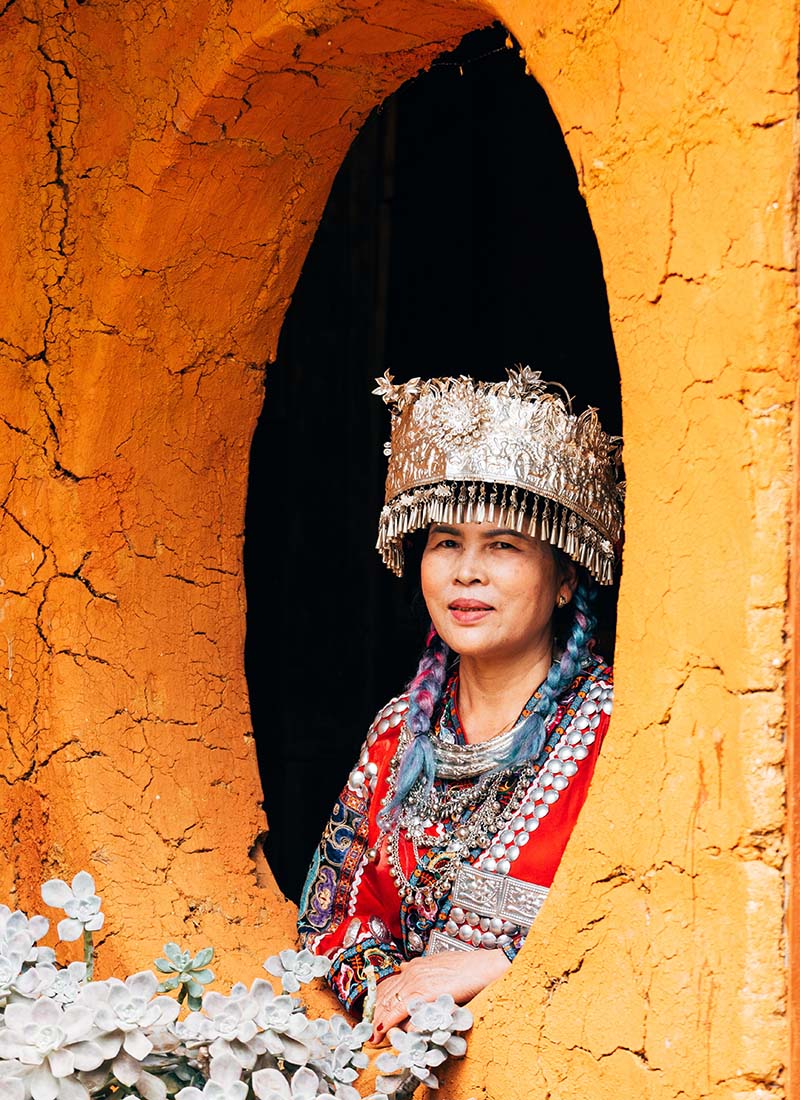
Traditional hmong dress in North Vietnam, Image by Jon Chica, Shutterstock
A practical note for those planning similarly: work with a specialist who understands both heritage and hospitality. In Hanoi, ask for hands-on time with a silk or lacquer master and specify that you want private access to a preserved tube house with a resident host; request a multi-course meal in the courtyard rather than a quick tasting. In Hoi An, reserve a one-on-one lantern class with access to premium silks and bamboo frames; pair it with a private river boat and a short traditional music set far from the tourist throng.
In Huế, seek permissioned entry to Gia Long’s mausoleum and a short private Nhã nhạc performance at the Royal Theatre (Duyet Thi Đường) or within a quiet pavilion; have a historian walk you through architecture and meaning. For art, let a curator or gallerist guide you: Green Palm and B/S in Saigon, 54 Traditions in Hanoi, Precious Heritage in Hoi An, Lebadang Memory Space and Gakka in Huế. Most can arrange shipping and certificates, so your suitcase stays light and your walls later tell the story.
What stayed with me wasn’t just what I saw; it was how I was seen. In each place, people made room for a stranger and then eliminated the strangeness: a master guiding my hand on lacquer, a host saving the crispiest shallots for my bowl, a musician answering my clumsy questions as if I were an old friend. This is the emotional logic of a luxurious escape — not excess, but ease; not spectacle, but sincerity. Vietnam gives it generously if you ask thoughtfully, if you enter softly, if you leave a little of yourself behind in thanks.
There is a line in my notebook that I underlined twice after Huế: Luxury is the right to listen. In the Old Quarter, that meant listening to brushes against lacquer, to histories whispered over noodles; in Hoi An, to silk being cut and the river singing against the hull; in Huế, to a scale ascending through centuries in a lantern-lit room.
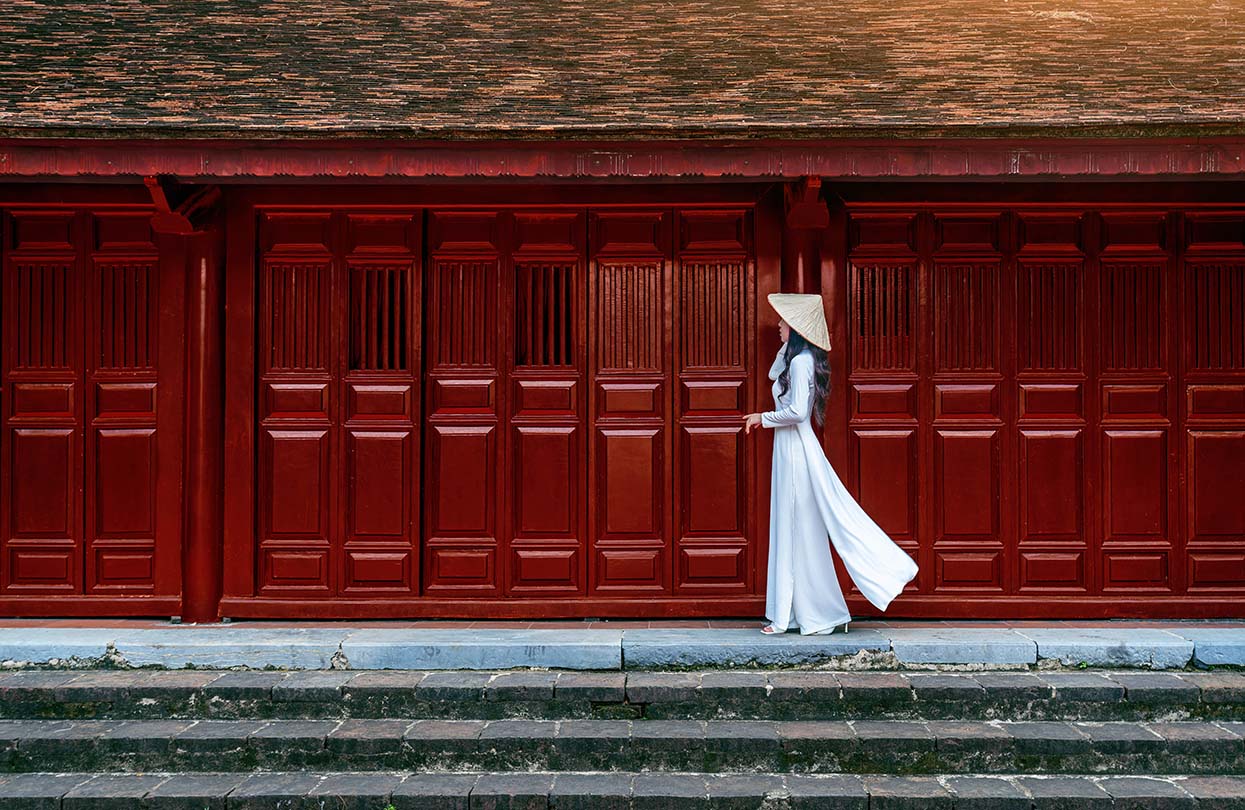
Hue, Image by Guitar photographer, Shutterstock
If your year has been loud and overlit, come here. Let the country retune you through its craftspeople, its guardians of memory, its quiet rooms. You will return with objects, yes — a lantern, perhaps a painting — but more importantly, with a new pace for your days and a respect for how beautifully tradition can hold modern life without breaking.
Halong Bay in Perspective: Air, Island & the Geometry of Calm
Some landscapes ask you to climb a hill. Halong Bay asks you to rise above it. I lifted off in a private seaplane just after noon, the propeller’s hum softening as emerald water spread into a field of limestone spires. From the air, the bay reads like calligraphy—inked strokes of karst and cove, negative space turned luminous. Luxury, in that moment, wasn’t silver service or overstatement; it was perspective. The entire UNESCO seascape unfolded at once, and my pulse slowed to match its tide.
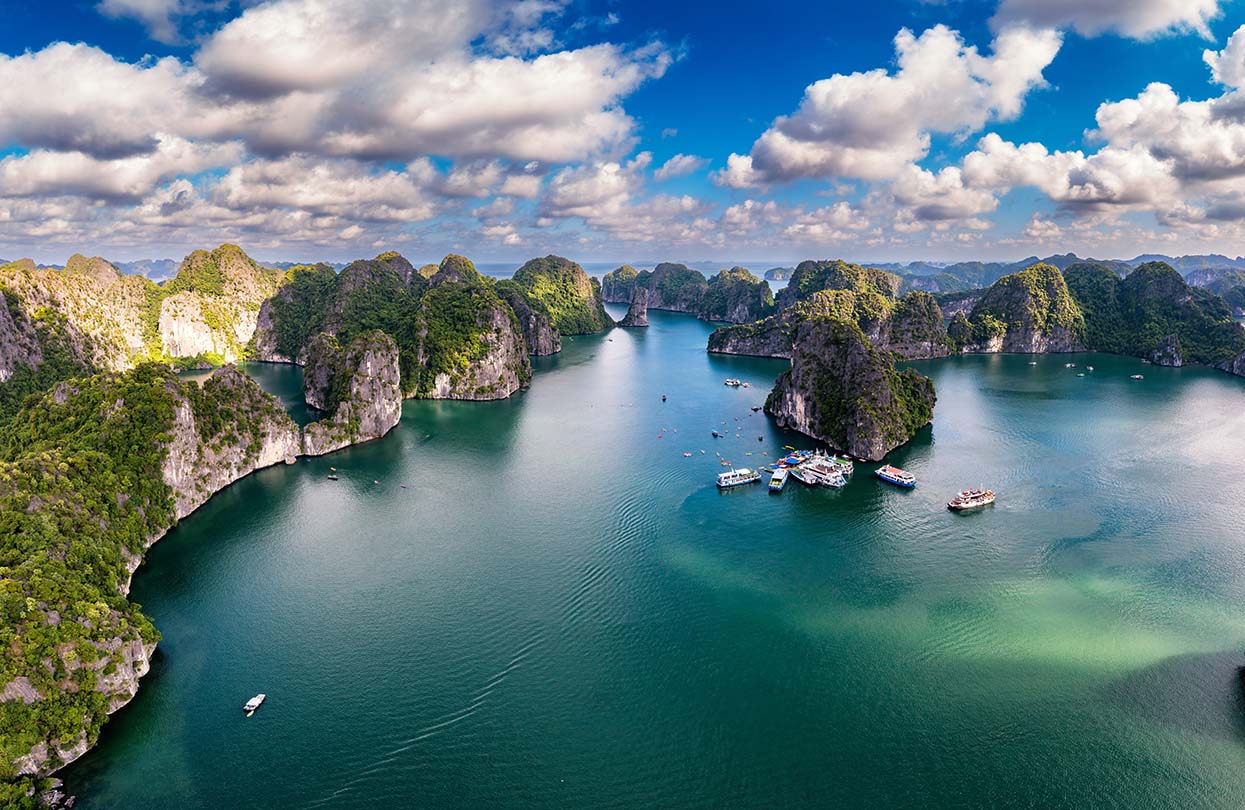
Lan Ha bay is the UNESCO World Heritage Site, Image by Dzung Vu, Shutterstock
We banked toward Bai Tu Long Bay, the quieter neighbor where the water seems to exhale. A speck resolved into Cong Do Island, a sliver of sand stitched to jungled rock. My pilot skimmed a glassy inlet and we taxied to a temporary mooring where a tender waited—no jostling, no commentary shouted into a microphone, just a discreet hand and a short step to shore. The picnic was already staged beneath a travel-worn canvas: linen, coolers, and a bottle reclining in ice. I waded in ankle-deep; the water felt like silk with a memory.
Further east, Cong Dam Island introduced a bolder palette—rugged cliffs, a hush that felt geological. It is part of an ancient geological park and it carries that age easily. We walked the beach without seeing another soul, then traced the cliff line in a kayak while a guide pointed out tiny ledges where swallows stitch their homes. There is no better proof of privacy than birds ignoring you.
The day’s most intimate hour came in the Tra Ban Island shallows, where dense forest leans right to the waterline. The pilot lifted again for a short hop, rotors thinning the heat; from above, Tra Ban looked like a green flame frozen mid-flicker. On the water, we slipped into shadow and everything went quiet enough to hear our paddles drip. My guide—a local naturalist—spoke softly about the mangroves and the tides, about why patience is the bay’s first language.
We saved the secret interiors for last. At Luon Cave Lagoon, we ducked through a low arch where the world briefly became stone and light. On the other side, the lagoon glowed an impossible jade—cliffs rising like cathedral walls, monkeys gossiping in the trees. Kayaks barely whispered across the surface. Later, in Lan Ha Bay, we threaded Dark and Bright Cave (Hang Sáng–Hang Tối)—sunlight to shadow to sunlight again, the eye dilating with each threshold. There is a childlike wonder to moving through brightness into cool darkness, hearing your own breath, then watching the water turn luminous when the sky returns.
We anchored near Ba Trái Đào (Three Peach Beach) for a last swim. The sand is small and pale, a soft bracket between rock outcrops; the water clears to glass by mid-afternoon. It felt like a private cove sketched for two and left unsigned. Back on deck, towels warmed from the sun, the chef set out river prawns and a bowl of lime-salt that tasted like the bay itself. I thought of the flotillas of cruise boats somewhere beyond the headland, and was grateful for the deliberate choice to be here instead—fewer people, more sky.
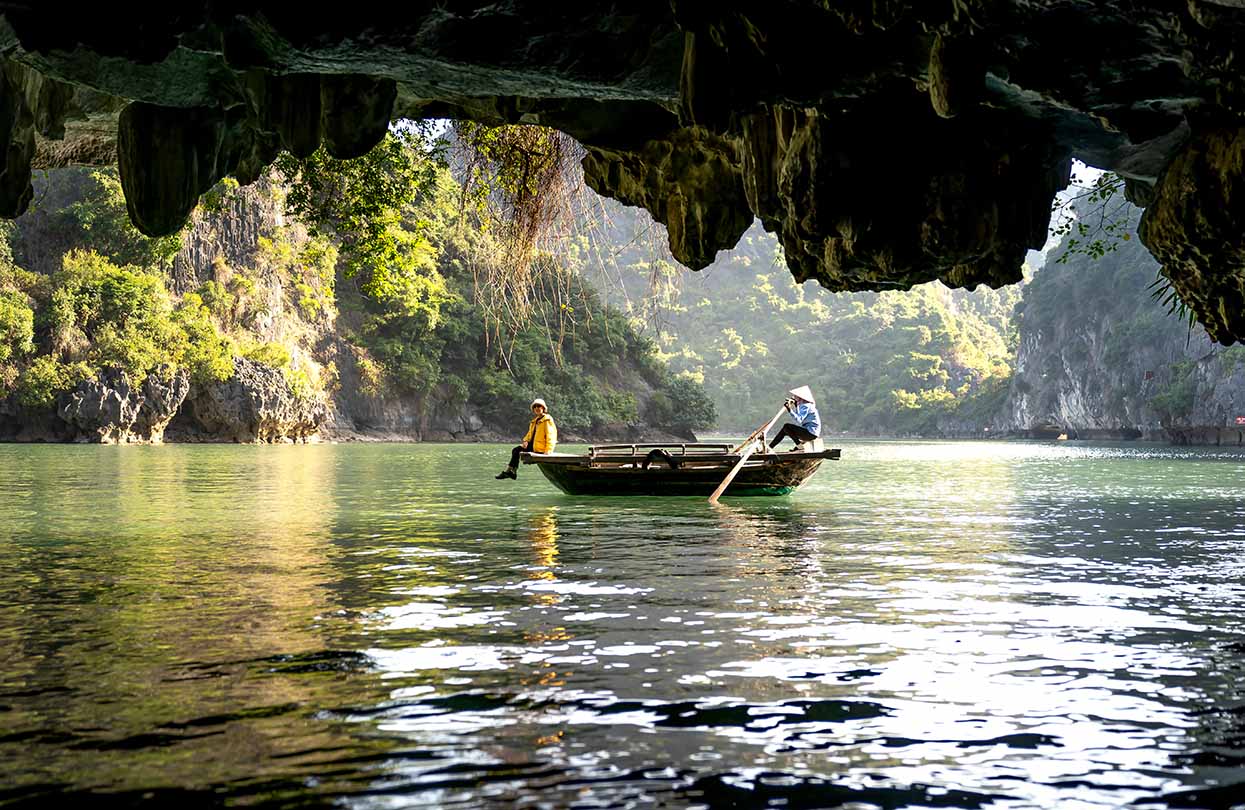
Taking a boat to visit Lan Ha Bay, Image by Quang nguyen vinh, Shutterstock
The return flight timed golden hour to perfection. Limestone turned bronze; channels darkened to ink. We raised a quiet sunset toast, the pilot sketched a wide arc, and the bay’s geometry reordered once more beneath our wing. What makes this experience luxurious isn’t only the aircraft or the VIP choreography; it’s the way the day edits itself—air to island to lagoon to air again—so you are never rushed, never crowded, always placed where the view is an answer.
If you’re planning it, request a hybrid charter: seaplane or helicopter for the aerial sweep, then a private wooden launch to reach those kayak-only lagoons and sandy aprons away from big-boat traffic. Ask for Bai Tu Long over classic Halong for serenity, and keep the flight slightly later than you think—so the bay gifts you its final color change from green to gold. Luxury, here, is precision that leaves room for awe. You come back with salt on your skin, a map in your head, and a new definition of what a view can do to your breathing.
Lanterns on the Perfume River: Huế’s Contemplative Luxury
I chose Huế for the days when I needed stillness with lineage. After Hanoi’s buzz and Danang’s neon, I wanted luxury that felt contemplative. So I booked a private dragon boat on the Perfume River: lanterns, low waterlight, and after-hours access to the citadel and royal tombs with a court historian as guide. We closed with an imperial-inspired dinner and an áo dài fitting. It was indulgence with meaning—time slowed, heritage near enough to breathe.
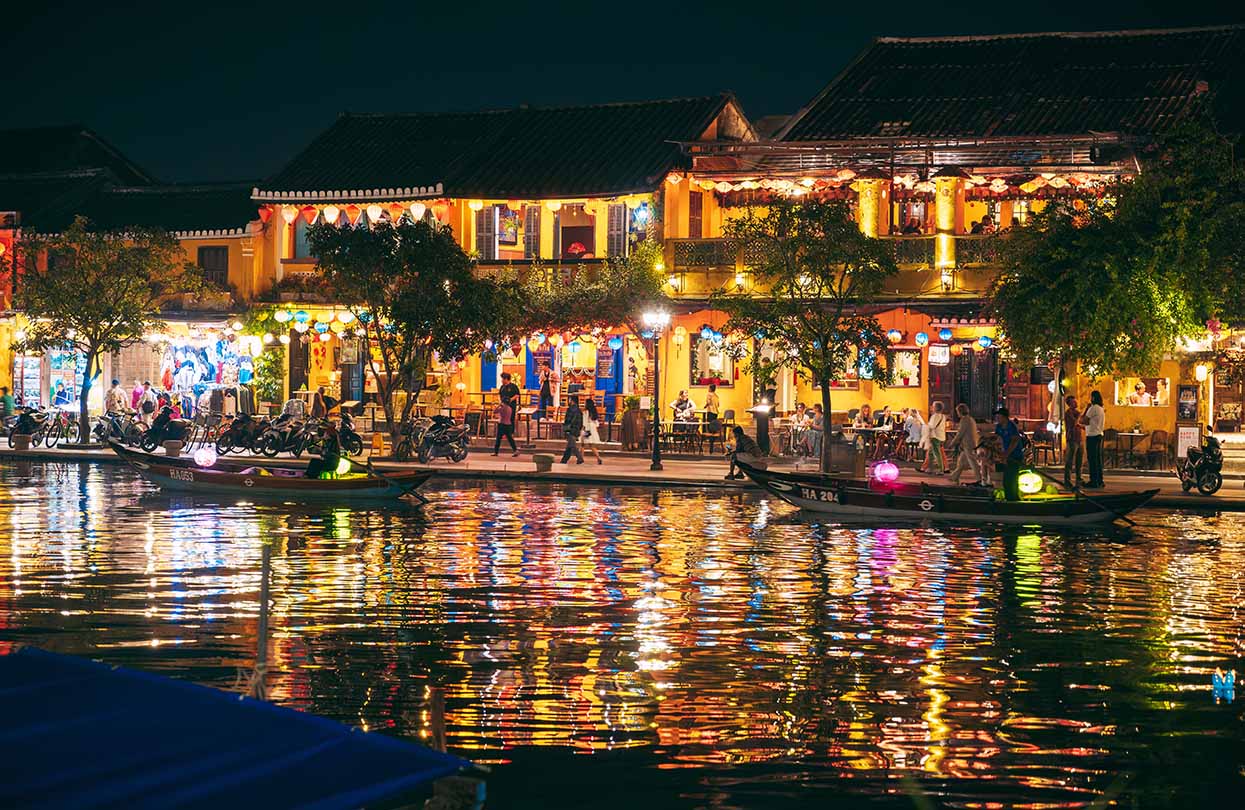
Hoi An ancient town and passenger boats on Thu Bon River, Image by Asia Evtyshok, Shutterstock
The Art of Drifting: Quiet Days and Delta Stories on the Mekong
I boarded a converted rice barge in Ho Chi Minh City because I wanted my luxury quiet and my days unhurried. For three nights, the Mekong became a moving salon: teak and linen, sun-warmed decks, and a small crew who learned my rhythms by noon. We drifted toward Cái Bè and Cần Thơ, slipping into side channels where palms curtained the sky. At dawn, we docked beside floating markets; I tasted rambutan still cool from shade and watched commerce conducted in fruit and laughter.
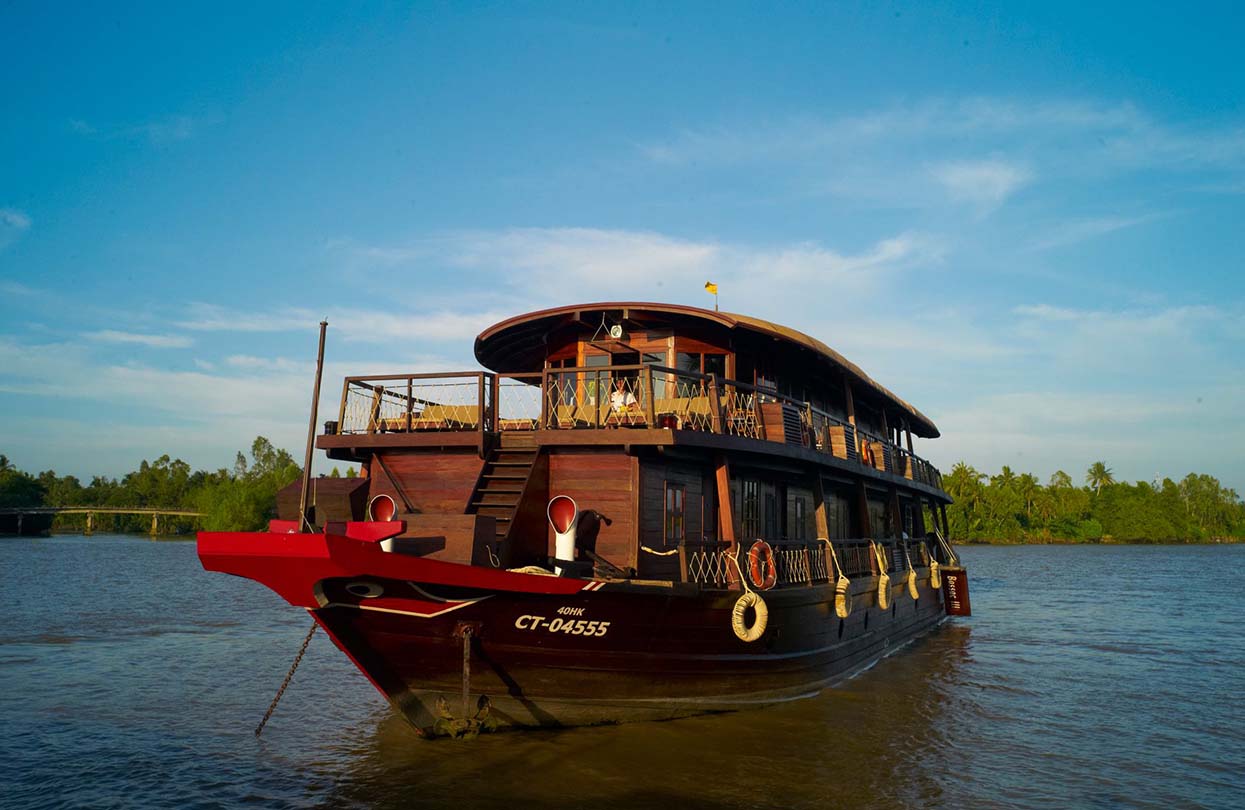
Cruising on the Mekong with Bassac III
Afternoons belonged to the stilt-house villages: a weave of workshops where hands turned river reeds into baskets and indigo into pattern. My guide translated stories; I traded questions for demonstrations and left with a sense of lineage, not just souvenirs. Onboard, the chef cooked the delta—elephant ear fish, young coconut salads, rice fragrant with pandan—paired with crisp whites and river breezes. At sunset, yoga on deck; at night, the barge read like a tiny gallery—lacquer pieces, woven mats, small artworks curated for conversation.
Read More: 8 Reasons Why Nha Trang Should Be Your Next Romantic Retreat
It felt rustic and deliberately luxurious: the right chair, the right view, the right silences stitched between encounters. I came for rest and left with a map of the Mekong in my chest.
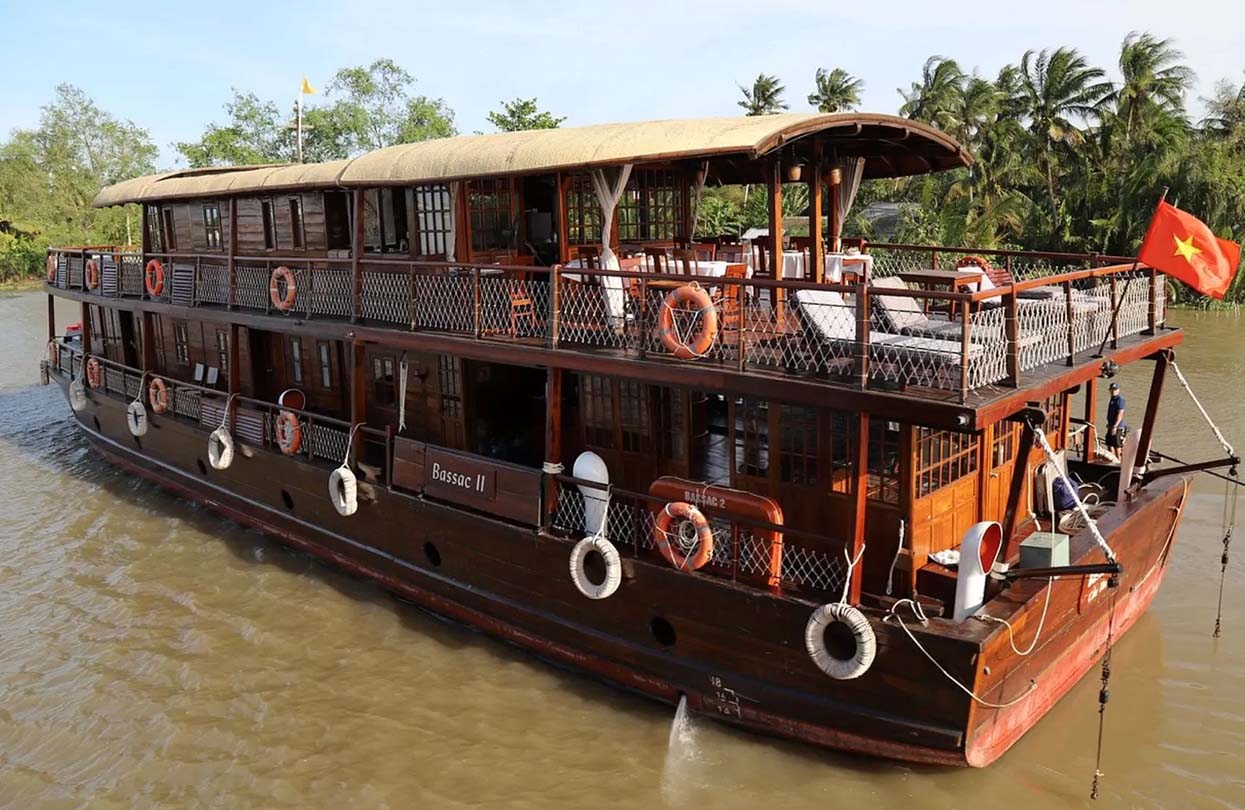
Cruising on the Mekong with Bassac
Rooftop Dining, Rewritten As Escape
Some nights in Ho Chi Minh City, I go upstairs to breathe. At Shri Lifestyle Dining, the city becomes a 360-degree theatre; I’ve lingered over wagyu brushed with Vietnamese herbs while a bartender tuned a cocktail to my mood. Live music slips between tables; service reads the room and gives you just enough light to feel cinematic.
For river nights, it’s M Bar at Hotel Majestic Saigon. The Saigon River moves like mercury below; freighters glide past neon. I order something cold and citrus, then let the breeze do its old magic on a long day.
Banana Mama Rooftop & Kitchen (10th floor, WMC Tower, District 1) is my playful interlude—tropical kitsch done smart, share plates sized for conversation, and cocktails that taste like holidays remembered correctly.
When I want a proper bottle and a plate with backbone, I climb to Mad Cow Wine & Grill (30th floor, Pullman Saigon Centre). The room hums with intent: steaks seared right, glasses that sing, a skyline that keeps widening as the night settles. Four rooftops, one purpose—air, space, and the feeling that the city is yours for an evening.
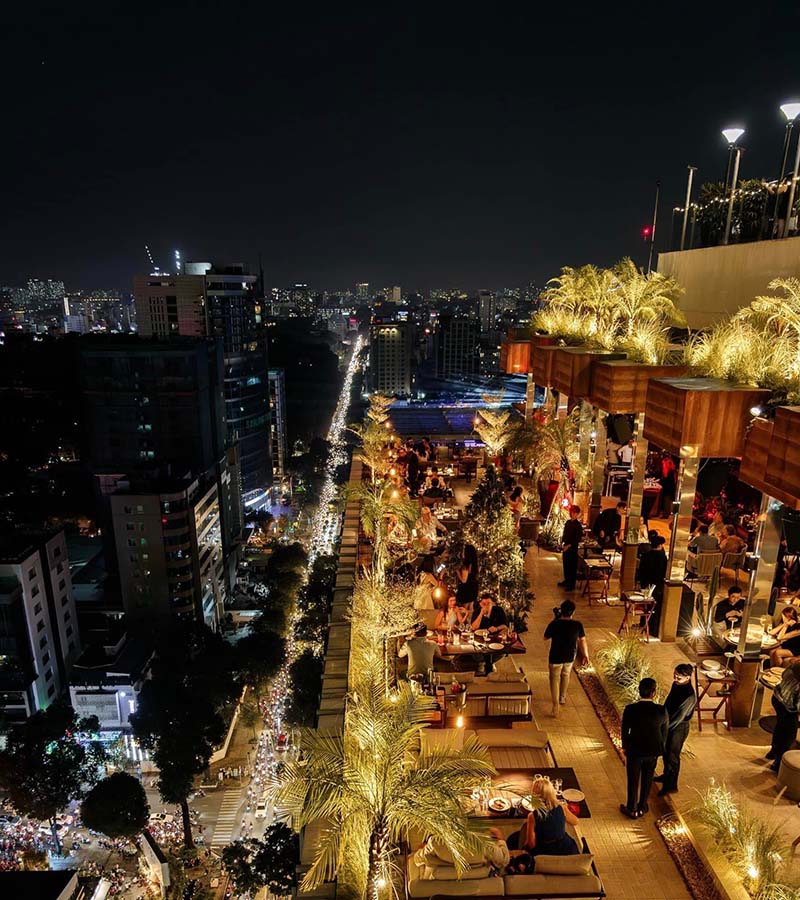
Shri Lounge rooftop bar
Luxurious Wellness, the Vietnamese Way
When my nerves fray and my calendar starts speaking in capital letters, I go looking for rituals older than my stress. In Vietnam, that means Thuốc Nam — Southern Herbology — practiced by thầy lang who read the body the way farmers read weather. The first session always begins with scent: lemongrass, pomelo leaf, wild ginger heating in a pot until the room turns green with steam. I sit beneath a light blanket for xông hơi, the herbal steam cleanse; breath deepens, pores open, and whatever I’ve been carrying—plane air, deadlines, static—lifts like mist from a river.
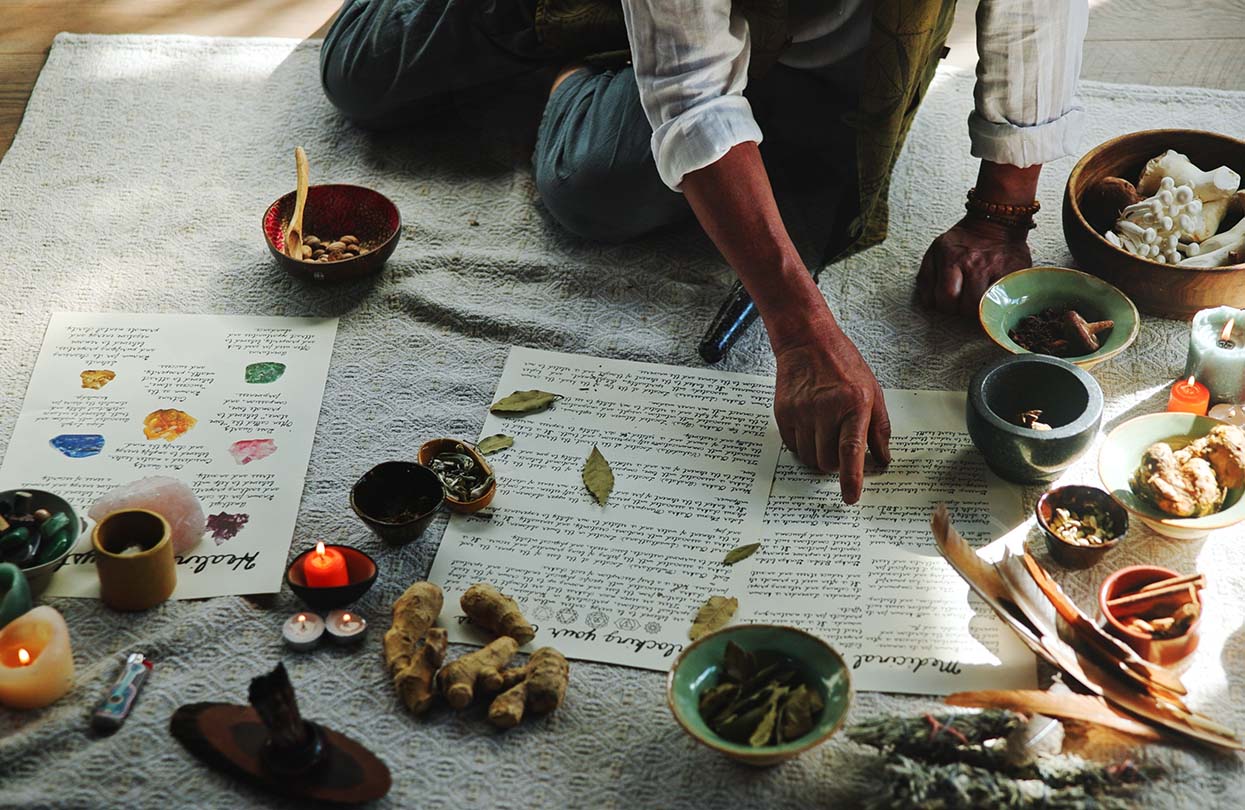
Southern Herbology practiced by thầy lang who read the body the way farmers read weather, Image by PeopleImages, Shutterstock
Then comes tắm tẩy, the ritual bath. A tub steeped with fresh leaves darkens the water to tea; the heat is soft, not punishing. The healer murmurs which plants calm wind in the chest, which herbs coax sleep, which flowers brighten skin left dull by cities. It’s precise, not performative: a pharmacology of gardens.
I felt it most completely at Namia River Retreat near Hoi An. Mornings began with an herbal inhalation, then detox therapies that felt like folklore made modern—compresses, mindful stretches, bowls of congee scented with perilla. Afternoons were for the river path and mindfulness sessions under bamboo shade; nights ended with a second, cooler soak and the kind of sleep that rewrites mood.
Farther north, Jiva Hoa Lu Retreat in Ninh Binh set wellness amid karst towers and water caves. Dawn yoga faced limestone like altars; days threaded pagoda visits with boat rides through caverns that dripped like chandeliers. My personalised detox leaned local—lotus seed, pandan, rice bran—served in broths and scrubs, then closed in a serene villa where silence had weight.
What makes these havens luxurious isn’t the square footage; it’s the intelligent care. Therapies are native-plant true, hours are unhurried, and the land is part of the treatment plan. I arrived wound tight; I left carrying fewer edges, perfumed faintly with herbs I could finally name.
I ended in Phu Quoc because every long journey deserves a whisper. Mornings were pearl-white sand and turquoise as far as thought could travel; afternoons, a drift between reef dives and kayaks in quiet coves where the water forgot to make a sound. At Regent Phu Quoc, beachside rituals folded salt and sunlight into calm. Palm shade, soft breezes, sustainable touches, unhurried service—this is where Vietnam exhales. I did, too. And that’s the note I wanted to carry home. ◼
Subscribe to the latest edition now by clicking here.
© This article was first published online in Oct 2025 – World Travel Magazine.

